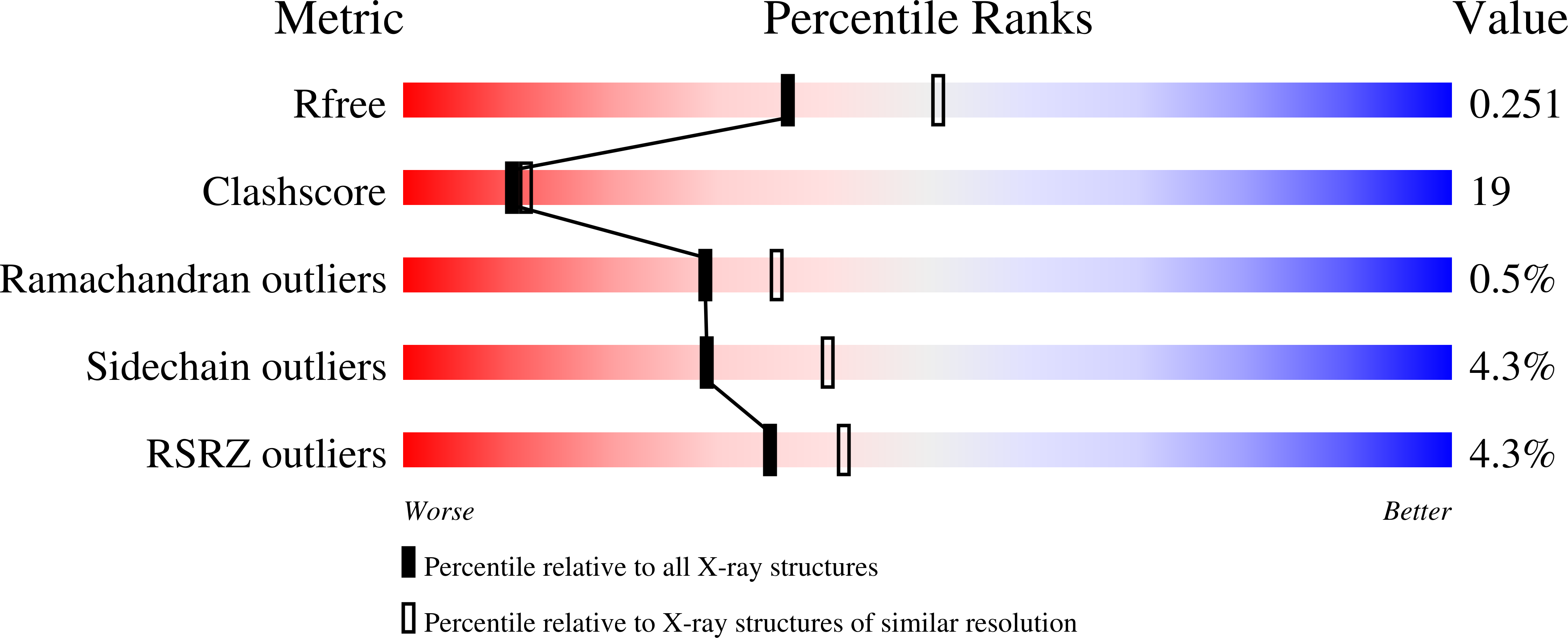Crystal structures of substrate complexes of malic enzyme and insights into the catalytic mechanism.
Tao, X., Yang, Z., Tong, L.(2003) Structure 11: 1141-1150
- PubMed: 12962632
- DOI: https://doi.org/10.1016/s0969-2126(03)00168-0
- Primary Citation of Related Structures:
1PJ2, 1PJ3, 1PJ4 - PubMed Abstract:
Malic enzymes catalyze the oxidative decarboxylation of L-malate to pyruvate and CO(2) with the reduction of the NAD(P)(+) cofactor in the presence of divalent cations. We report the crystal structures at up to 2.1 A resolution of human mitochondrial NAD(P)(+)-dependent malic enzyme in different pentary complexes with the natural substrate malate or pyruvate, the dinucleotide cofactor NAD(+) or NADH, the divalent cation Mn(2+), and the allosteric activator fumarate. Malate is bound deep in the active site, providing two ligands for the cation, and its C4 carboxylate group is out of plane with the C1-C2-C3 atoms, facilitating decarboxylation. The divalent cation is positioned optimally to catalyze the entire reaction. Lys183 is the general base for the oxidation step, extracting the proton from the C2 hydroxyl of malate. Tyr112-Lys183 functions as the general acid-base pair to catalyze the tautomerization of the enolpyruvate product from decarboxylation to pyruvate.
Organizational Affiliation:
Department of Biological Sciences, Columbia University, New York, NY 10027, USA.





















